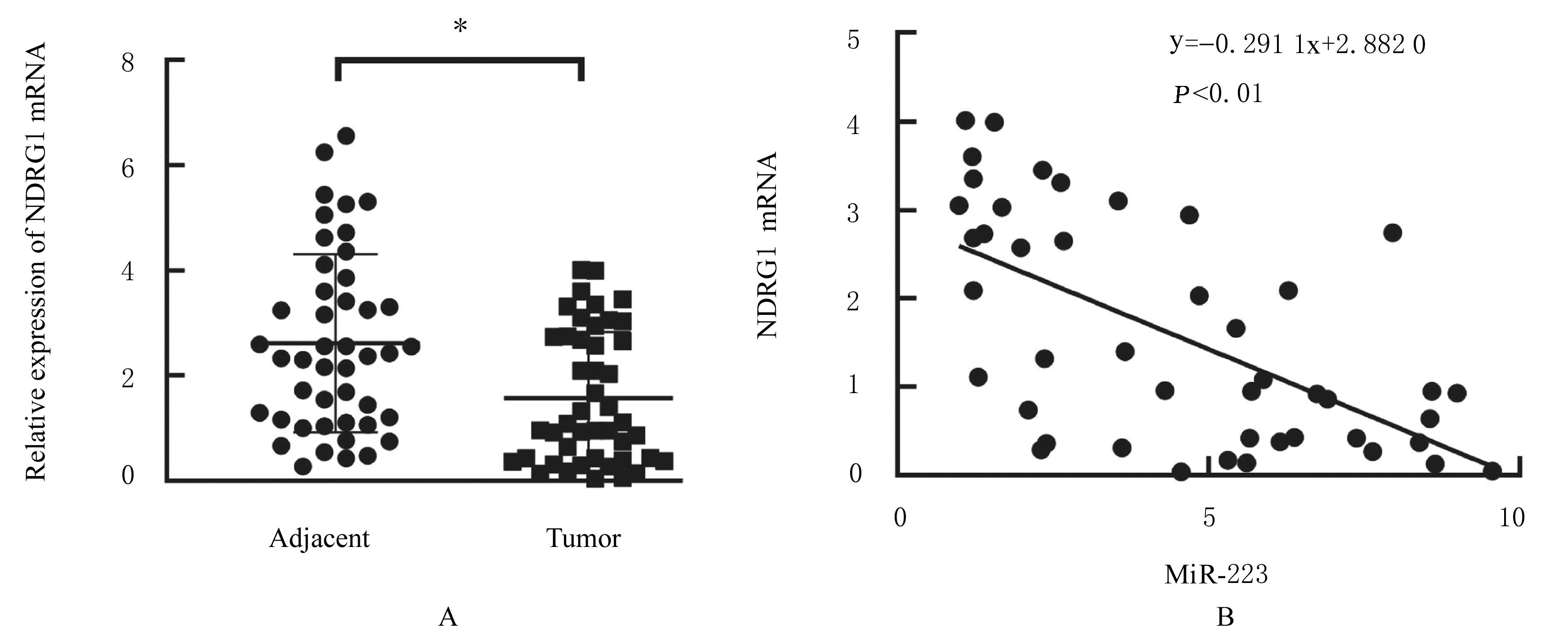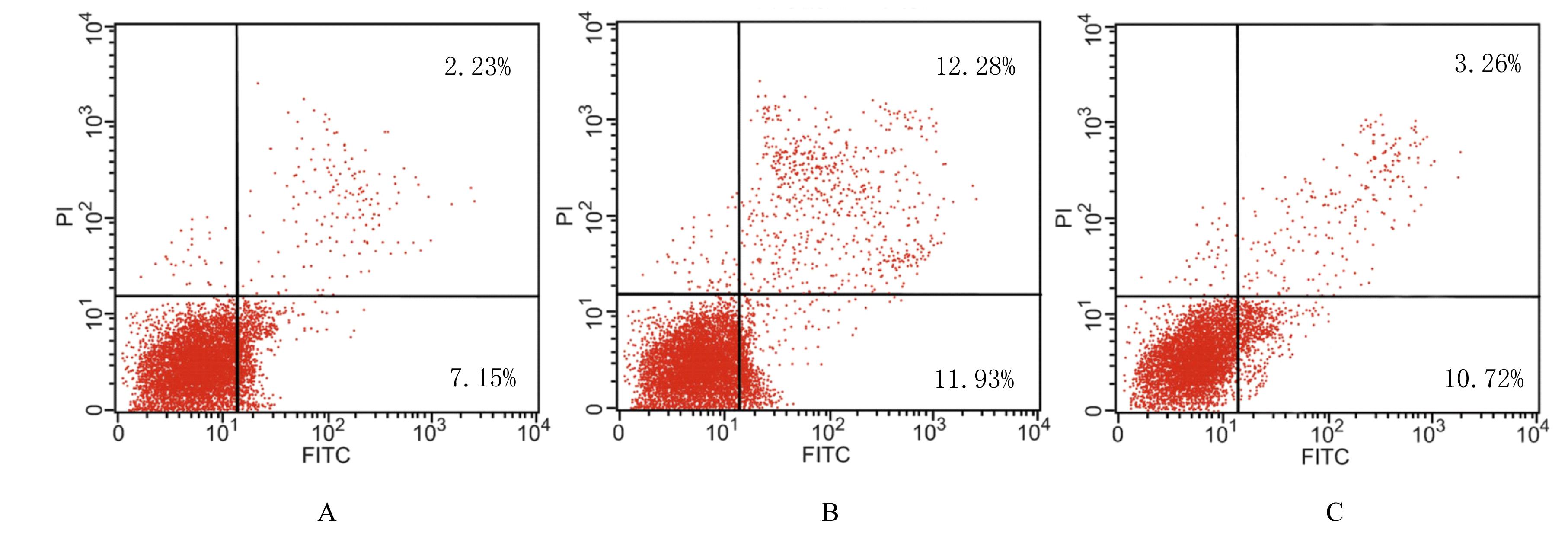吉林大学学报(医学版) ›› 2023, Vol. 49 ›› Issue (1): 150-157.doi: 10.13481/j.1671-587X.20230119
• 临床研究 • 上一篇
卵巢癌组织中miR-223的表达及其对卵巢癌OVCAR3细胞增殖和侵袭的促进作用
- 南方医科大学附属东莞医院妇科,广东 东莞 523000
Expression of miR-223 in ovarian cancer tissue and its promoting effect on proliferation and invasion of ovarian cancer OVCAR3 cells
Yanya CHEN,Jinlan ZHAO,Chan LI,Lishan HUANG( )
)
- Department of Gynecology,Affiliated Dongguan Hospital,Southern Medical University,Dongguan 523000,China
摘要:
目的 分析微小RNA-223(miR-223)在卵巢癌组织中的表达情况,探讨miR-223对卵巢癌OVCAR3细胞增殖和侵袭的影响,并阐明其分子调控机制。 方法 采用实时荧光定量PCR(RT-qPCR)法检测45例卵巢癌患者手术切除组织样本和不同卵巢癌细胞中miR-223表达水平,分析不同临床病理特征卵巢癌患者癌组织中miR-223表达水平。体外培养卵巢癌OVCAR3细胞,采用生物信息学、双荧光素酶报告基因实验和Western blotting法分析miR-223对N-myc下游调节基因1(NDRG1)的靶向调控关系。OVCAR3细胞分别转染阴性对照模拟物(NC组)、miR-223 抑制剂(MiR in组)和同时转染miR-223 抑制剂及siRNA-NDRG1质粒(MiR in+si-NDRG1组),克隆形成实验检测各组细胞克隆形成数,流式细胞术检测各组细胞凋亡率,Transwell小室实验检测各组细胞中侵袭细胞数。 结果 与癌旁正常组织比较,卵巢癌组织中miR-223表达水平明显升高(P<0.01),miR-223表达水平与卵巢癌患者组织学分化程度、FIGO分期和淋巴结转移有密切关联(P<0.01)。不同卵巢癌细胞中miR-223表达水平均高于正常卵巢上皮细胞(P<0.01)。miR-223可靶向结合NDRG1并抑制NDRG1的表达,且在卵巢癌组织中NDRG1 mRNA表达水平与miR-223表达水平呈负相关关系(r=-0.291,P<0.01)。与NC组比较,MiR in组细胞中克隆形成数和侵袭细胞数均明显减少(P<0.05或P<0.01),细胞凋亡率明显升高(P<0.01);与MiR in组比较,MiR in+si-NDRG1组细胞中克隆形成数和侵袭细胞数明显增加(P<0.05或P<0.01),细胞凋亡率明显降低(P<0.01)。 结论 MiR-223在卵巢癌组织中呈高表达,其表达水平与卵巢癌的严重程度有密切关联。miR-223可通过靶向抑制NDRG1表达促进卵巢癌细胞增殖和侵袭,并抑制细胞凋亡。
中图分类号:
- R737.31












